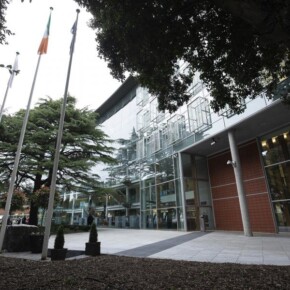Remembering Roger Casement
Dublin People 02 Aug 2014NINETY eight years ago this week, Roger Casement was hanged in Pentonville Prison in England for his part in the 1916 Rising.
Born at Doyle’s Cottage in Sandycove, County Dublin, Roger Casement identified as an Ulster Protestant. His father, Captain Roger Casement, was a former British solider who volunteered to fight for Hungarian independence. Captain Casement was strongly sympathetic to the Fenians and openly expressed his strong belief in republicanism. Casement’s mother, Anne Jephson, was a catholic from Cork.
By the time Roger was 13, both his parents were dead. He was taken in by his Uncle, John Casement of Ballycastle, County Antrim, who had a substantial library of books with a significant section covering Irish history. Young Roger devoured these books and began to fall in love with Ireland and her people.
Roger Casement did not have a road to Damascus conversion to republicanism in his later life. Irish nationalism was a passion he had nurtured from his earliest youth. Reading extensively about the 1798 Rebellion, he identified with the Ulster Presbyterians who had led the republican uprising in Antrim and he soon became a firm supporter of the republicanism of Wolfe Tone.
Before becoming a household name in Ireland, Roger Casement had gained international fame for his humanitarian work in Africa and Peru. Ironically, Casement’s humanitarian work earned him a British Knighthood, while at the same time, completely convincing him of the evils of empire.
At home in Ireland while on leave from the British Foreign service in 1904-05, Casement joined the Gaelic League and began to make links with republican circles across the country. Casement was supportive of the ideas of Sinn Féin and using a pseudonym, he began to contribute to nationalist newspapers such as Arthur Griffith’s
‘United Irishman’.
In 1913, Casement resigned from the Foreign Office and moved back to Ireland where he became a founding member of the Irish volunteers. He was elected to the organisation’s first provisional committee and helped to draft its manifesto. Casement threw himself into the work of building the Volunteers, speaking at recruitment meetings across the country.
Roger Casement was one of the key architects of the Howth and Kilcoole Gun Running. However, he was not in Ireland to oversee the landings, as he had gone to America to raise support for Irish freedom.
On the outbreak of the Imperial War in 1914, Casement believed Germany could become an ally for Irish revolutionaries, and he travelled to Europe in an attempt to win support for an Irish rebellion.
Casement had three aims while in Germany. The first was to win German recognition for Irish independence. The second was to secure support from Germany for a rebellion in Ireland and thirdly he hoped to recruit an Irish Brigade made up of captured Prisoners of War (POW) that would take part in an uprising.
The Germans were at best lukewarm, but they did agree to send a shipment of 20,000 rifles on board the
‘Aud’. Arrangements were made for the German shipment to land off the coast of Kerry on Good Friday 1916, in good time for the rebellion planned for Easter Sunday.
The arms landing ended in disaster. Due to a mistake in communications, there were no volunteers to meet the Aud on arrival. The ship was intercepted by the British Navy and rather then allowing the arms to be captured, the Captain scuttled her. Casement was arrested shortly afterwards and was imprisoned in the tower of London.
His arrest was international news and caused outrage amongst the British establishment. Casement was put on trial for treason in London. By the time of the trial, however, there was growing revulsion at the executions of the republican leaders in Dublin after the Rising, and a powerful campaign for clemency got underway which was supported by George Bernard Shaw and Sir Arthur Conan Doyle.
During the trial, British intelligence published what have become known as the Black Diaries, purporting to belong to Casement. The diaries, widely discredited as forgeries in Ireland, describe the activities of a promiscuous homosexual. At a time when homosexuals were persecuted by conservative society, the diaries succeeded in taking the wind out of the clemency campaign.
Roger Casement was convicted of Treason and stripped of his honours.
On August 3 1916, Casement was hanged in Pentonville Prison and buried within its walls. In 1965 Casement was brought home to Ireland and buried in Glasnevin Cemetery. Finally the 1916 Rising’s last executed leader could rest in peace.
?¢ Daithi Ã?’Riain is a Dublin based historian, with a specific interest in social history and the Irish revolutionary period.











